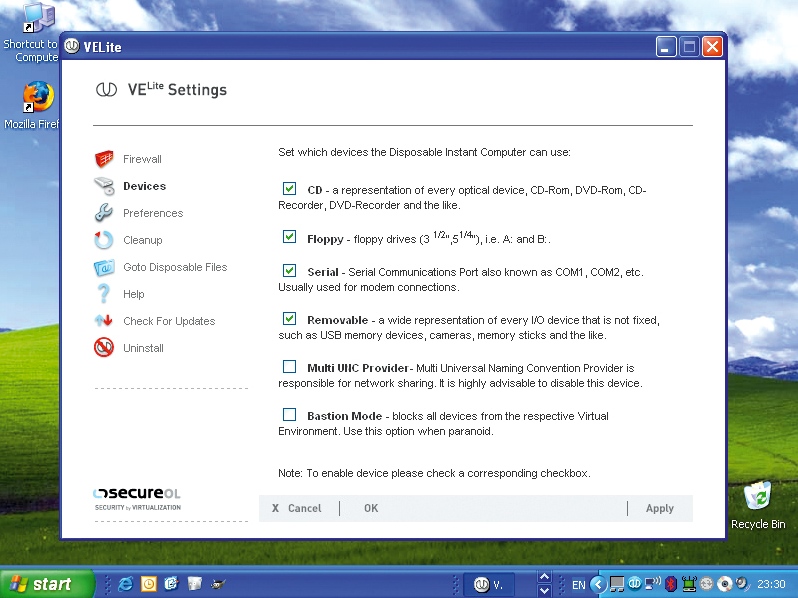TechRadar Verdict
Advanced, but like a hammer cracking a nut
Why you can trust TechRadar
We're all familiar with the idea that shutting down your Internet browser won't shut out people who want to know what you've been looking at. Whether it's Internet Explorer or Mozilla Firefox, it's possible to work out what you've been up to online by following the thread of temporary files that are left behind when a browser closes.
There are various solutions that range from simply removing all the offending information when you close your browser (by selecting 'Clear Private Data' from Firefox's tool menu, for example) to running Internet software in a sandbox - a locked down area of your computer or restricted user account.
VElite takes this approach a stage further, and actually creates a whole virtual machine for you to play with. SecureOL would rather call it a 'Disposable Instant Computer', a copy of your system, along with all its installed software, created and destroyed on demand.
This means you can run any software you like - browse celebrity gossip sites to your heart's content or even run your quarantined collection of spyware. When you destroy the virtual machine, you destroy all trace of data within the machine.
Isolation unit
VELite is the only security solution we've come across that installs hardware drivers as part of the installation process, and the first time you create a virtual machine you need to wait five - ten minutes as VELite creates a working copy of your system.
Once installed, the software is managed from a small toolbar icon. Right-clicking this will bring up a menu that enables you to start the virtual machine, or switch to one if it's already running. When you switch to the machine, you'll find an almost identical copy of your Windows desktop, although it's clear that there are some differences.
It feels very much like a fresh Windows installation, with the Start menu in its default configuration and Windows will even ask if you want quick tour. Everything else is the same as your real machine. We ran several applications and 3D games, and there was no noticeable difference in performance.
Firefox ran without any problems, and your browser will inherit bookmarks and cookies from your real desktop. If you download files and want to move them across to your real desktop, then you need to enable a shared directory from the special toolbar icon. Files placed in this directory are accessible from both systems, and you're able to switch back to your real desktop using the same toolbar icon.
Once you're back in your real desktop, you can shut down the virtual machine, and in doing so, remove every bit of data associated with the session. This will include history data, Internet cache and cookies, as well as any files you may have downloaded and spyware that may have started.
There will be absolutely no trace of what you did within the virtual machine. However, this also means that you need to enter all this information manually every time you run your software from within VELite.
It's important not to be lulled into a false sense of security - this will only protect you from spyware and people you share your computer with. Despite including a utilitarian firewall, your IP address is still visible to anyone who looks.
The bottom line is that VELite is a clever, but heavy-handed, approach to a simple problem.
Tech.co.uk was the former name of TechRadar.com. Its staff were at the forefront of the digital publishing revolution, and spearheaded the move to bring consumer technology journalism to its natural home – online. Many of the current TechRadar staff started life a Tech.co.uk staff writer, covering everything from the emerging smartphone market to the evolving market of personal computers. Think of it as the building blocks of the TechRadar you love today.
